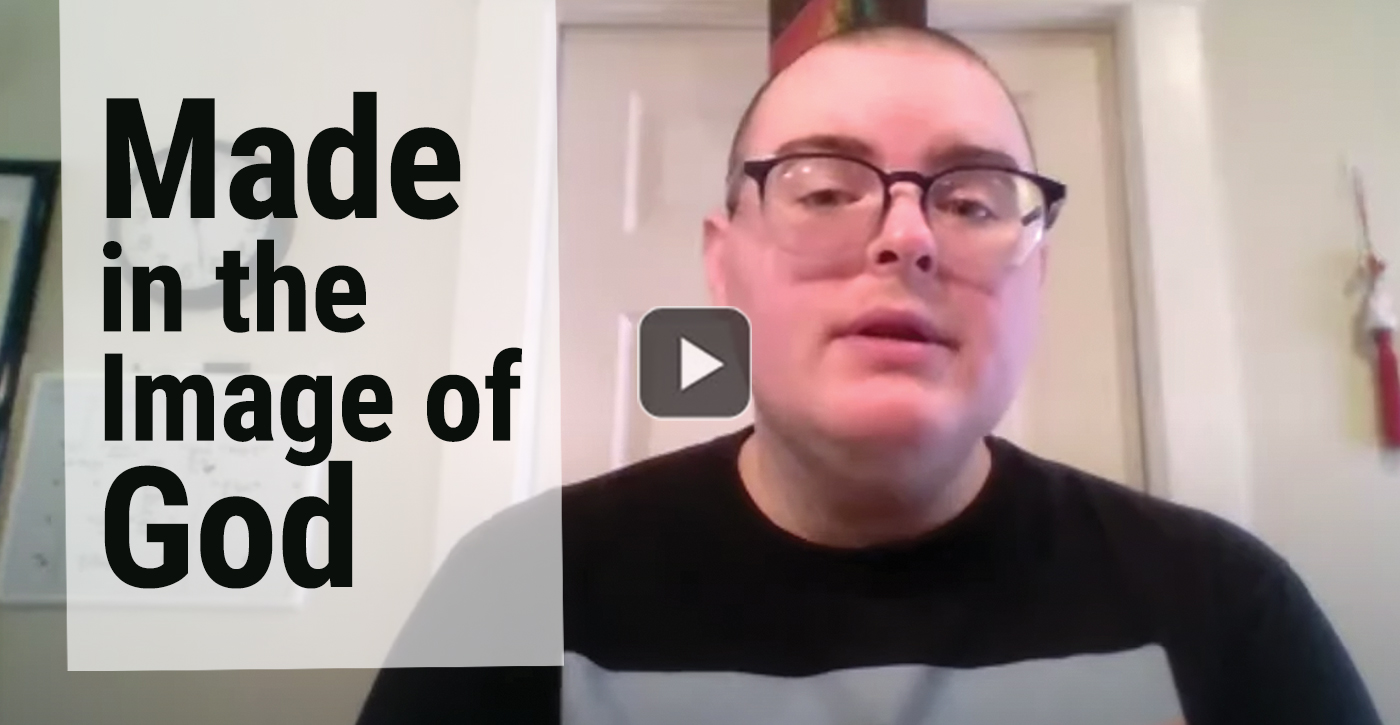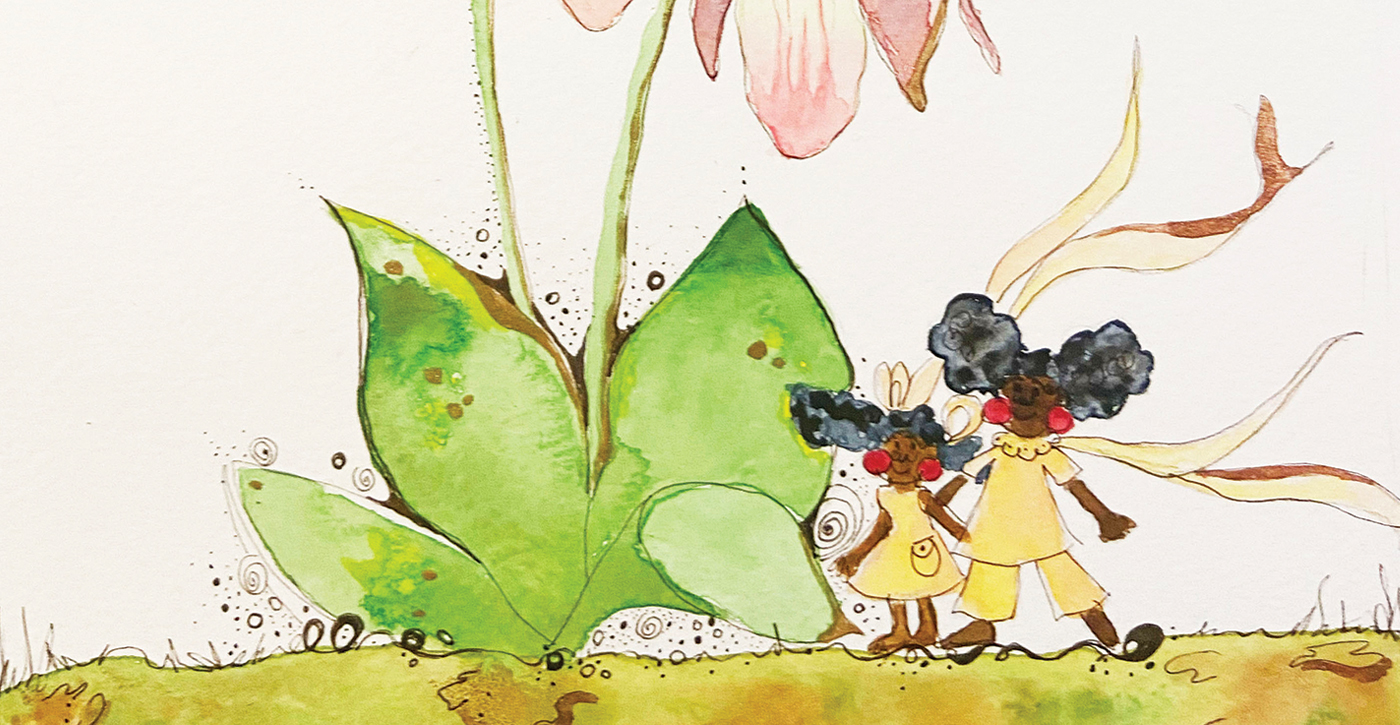ur ways of imaging God are related to the ways in which we image ourselves—and our relationships with each other, with our world, and with the universe. Images serve to express the meaning of experience, with all its limitations and possibilities.
The most ancient religions are concerned with the polarities of chaos and order, death and life. In later religious systems, however, these polarities are described in terms of gender, with male and female principles engaged in an eternal struggle for power. This continues to the present day, as we struggle with the issues of patriarchal social systems, women’s liberation, and inclusive language.
To move beyond this hopelessly bipolar tension, I would like to suggest that it is the adult world that has created a god in its own image. Civilization, adult socialization, and gender, as well as racial and generational dominions, are considered the spheres of divine activity in the world. Above all, this grown-up God demands the control and suppression of childlike ways of exploring and celebrating life—ways that emphasize spontaneous delight and wonder as opposed to the paradox of order and perpetual conflict.
We have it on pretty good authority that unless we become like children we will not "enter the Kingdom of God" (Matt. 18:3). It is a popular sentiment that most religious people readily embrace. But what exactly does it mean for adults who are anxious to discipline and control their offspring, or mold them into images of themselves? Furthermore, why are there so few accounts (outside of the Gnostic gospels) of Jesus as a young child rebelling against parental authority? To reflect any further on this requires a radical shift of the imagination. We need to see Jesus as a human being who had a childhood before we can begin to envision him as a lively, gender-friendly image of God’s love.
In her book, Models of God, Sallie McFague interprets the "good news" as "a destabilizing, inclusive, nonhierarchical vision of fulfilment for all creation." She asks how we should interpret the presence of God to the world in order to empower that vision. In her attempt to reimage the Gospel for our time, she first rejects the monarchical model that has dominated western culture for many centuries—then seeks alternative metaphors that suggest mutuality, interdependence, caring, and responsiveness.
Feminist theologians have often taken the lead in exploring alternative images of God. But even they are beginning to be aware of the risks of perpetuating a gender imbalance. Anne Carr, the writer of Transforming Grace: Christian Tradition and Women’s Experience, writes, "Exclusively female images of God or Goddess worship can suggest a reversal of patterns of domination rather than genuine transformation: surely mother symbolism can quickly become as oppressive, suffocating, sentimental, possessive as an authoritarian father symbolism."
Other feminist theologians, including Rosemary Reuther, have expressed concern over the negative resonance of gender models, particularly those that are parental in nature. These suggest a kind of permanent parent-child relationship to God, in which God becomes a neurotic parent who doesn’t want us to grow up.
Our goal, then, is to discover fresh images that serve to reconcile gender conflicts, as well as overcome the destructive influence of authoritarian models and structures. We still need to derive these images from the world of human interaction and experience if they are to retain a semblance of truth and relevance. While the metaphor of the world as God’s body has some appeal for Sallie McFague, for example, she still feels that the relational aspect is undeveloped in it. She argues that the main point of religious metaphor is "to create a shock of recognition." This shock may be recognition of lost or forgotten knowledge, a recognition that changes our adult modes of perception and expressions of religious devotion.
Robert Munsch, a popular writer of children’s books, has often challenged the boundaries of parental indulgence. But he came closest to stepping on the toes of God in a story entitled Giant, or Waiting for the Thursday Boat (1989). In it, an Irish giant named McKeon states his intention to deal roughly with the God who has driven all the other giants and elves out of Ireland—to pound him "until he looks like applesauce." When the book first appeared, opposition arose from a wide spectrum of the population, including librarians, teachers, and parents—perhaps because it suggested an alternative image to traditional adult authority. But why should this be any more offensive to pious ears than the daily round of violence that permeates children’s movies and television programs?
To paraphrase a statement by Anne Carr, the adult [or male] divinity in heaven initiates a divinizing of adult authority, responsibility, power, and holiness on Earth, despite the pious avowals of religious leaders about children’s equality. Adult symbolism is so deeply embedded in Christian mythology, church structures, and liturgical practice that the Christian imagination unconsciously absorbs its destructive and exclusionary images from childhood on.
Robert Munsch’s story takes place in Ireland at the time of St. Patrick. It begins: "One Sunday, McKeon, the largest giant in all Ireland, got mad for the first time in his life." St. Patrick, in his zeal to Christianize Ireland, had driven all the snakes, elves, and giants out of the country. McKeon was left to be the sole defender of the ancient culture. He is primitive, passionate and impulsive, though not without a certain charm. His wrath was provoked by an apparently well-intentioned saint who believed he was "just doing what God wanted." St. Patrick’s God is generally benevolent, but somewhat distant from the world and not above punishing those who fail to do God’s will.
The last point raises the specter of what Sallie McFague calls "asymmetrical dualism," a relationship between God and the world in which the two are only distantly connected. All the power, whether it be in the form of domination or benevolence, is in God’s hands. McKeon, being associated with the pre-Christian religion in which divinity permeated the whole of the natural world, is reduced to insignificance. As the biggest and the last giant in Ireland, his anger is understandable even if it does seem futile.
Whenever God seems distant or disinterested in the world, people are like children who depend on their parents for nurture and protection. When they feel that their greatest needs are being withheld from them, they can be very difficult to live with indeed! McKeon’s irreverent challenge to divine authority prompts St. Patrick to give him such a warning: "God is mad, McKeon! God is coming on the Thursday boat!" McKeon takes up the challenge and girds himself for battle.
Eventually, St. Patrick departs from this world to continue his mission in heaven. McKeon remains below waiting for the Thursday boat, observing a number of new arrivals—each suggesting a traditional image of God as potentate, warrior, and capitalist. But all fail to measure up to his expectations as a worthy adversary.
He would be a very frustrated giant if it weren’t for the companionship of a little girl who was one of the first to disembark. This child eventually tells him that St. Patrick has gone to heaven where he continues to hang church bells. This drives McKeon mad, and he vows to continue his battle in heaven itself. So the story moves to a higher plane, where all of our human preconceptions are turned upside down. I am reminded how Sallie McFague’s images of God as lover and friend place the emphasis on human relationships, with a refreshing emphasis on God’s vulnerability. The essence of the Christian vision, too often obscured by endless confrontational politics, is God’s willingness to suffer with humanity.
God still comes to us through the most vulnerable of creatures, the infant who has the potential to transcend all adult claims to authority and understanding. Some of us who have read Giant like to think that we knew who God was supposed to be all along, and we laugh at McKeon, who didn’t see the truth right under his nose. Do we really, though? If that’s the case, then why doesn’t Robert Munsch just say so and get to the point? Unsettling questions remain.
Fresh and surprising metaphors that leave room for spiritual growth may also deepen our understanding of authority. After a fruitless search for God to vindicate their respective causes in heaven, St. Patrick and McKeon are exhausted. The little girl reappears, and she tells them matter-of-factly, "Saints are for hanging up church bells and giants are for tearing them down. That’s just the way it is. Why don’t you two try getting along?" Do we hear resonances of the teacher of wisdom in the book of Ecclesiastes, Koheleth, who proclaimed that for everything there is a season and a time for every purpose under heaven? This implies, of course, that only God knows the right season, and the most we can do is enjoy the limited insights we are granted.
The smallest house in heaven is filled with church bells, snakes, elves, giants and one little girl—the most stalwart opponent of pretensions to power in the human world. Seeing the frustration and bewilderment of giant and saint, the little girl starts to laugh. "She laughed till the mountains shook, rivers moved and stars changed directions. For a little girl she had an enormous laugh." Such laughter brings a new creation into being, and this new creation resists all of our images and our attempts to explain it in terms of power and control.
Robert Munsch’s suggestion is liberating for the adult mind, revitalizing the child. But the subtlety is important too. No child remains a child forever, and even archetypes become fossilized if they are embedded in language and tradition for too long. The essence of divine activity in the world is a mystery that tests and resists every form of articulation and imitation. "The unknown hidden God," writes Anne Carr, "is a final way of speaking of the God who is always more than human images and concepts can suggest."
When it comes to God-talk, we’re all still "waiting for the Thursday boat."



